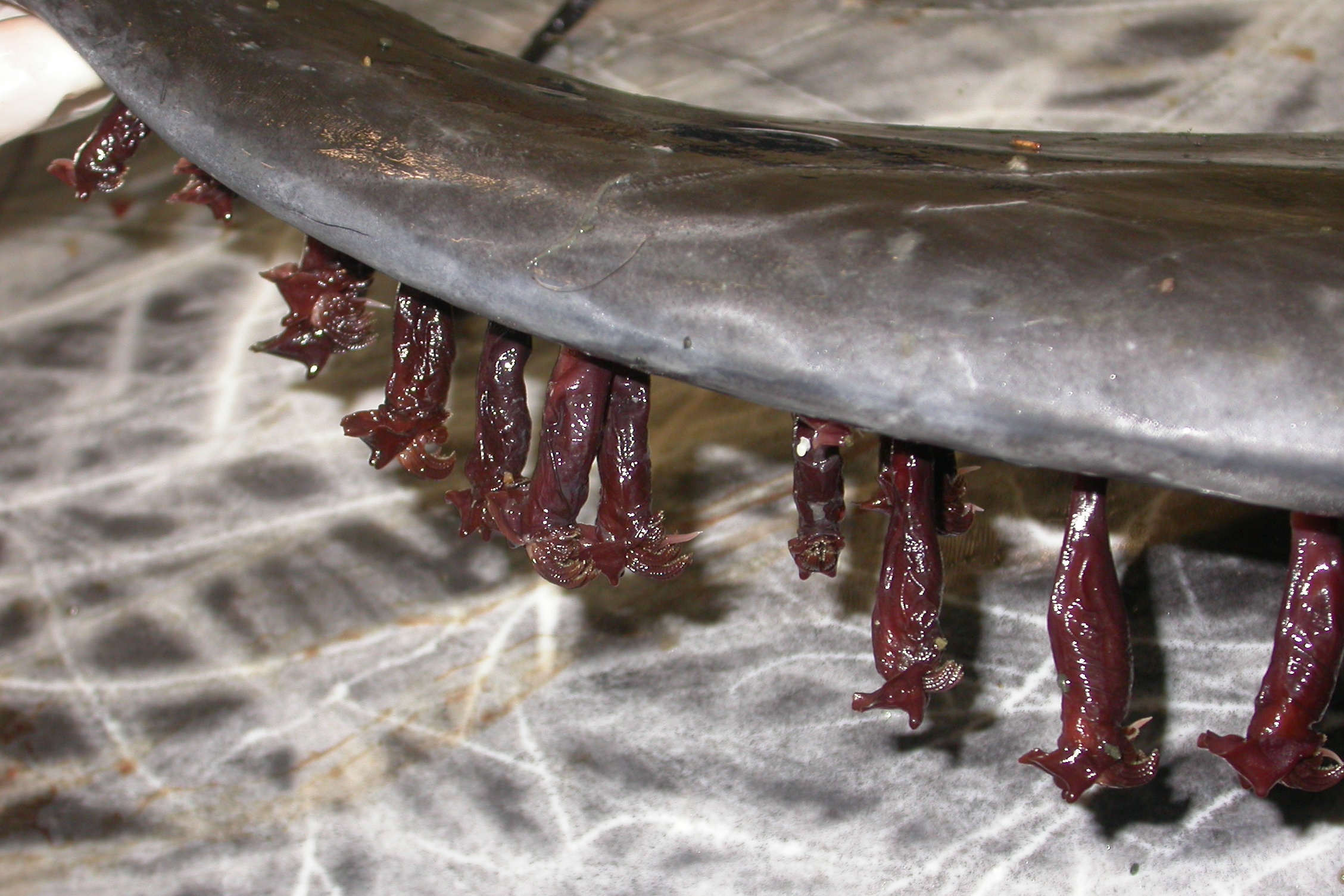
Living on the edge is the title of the research led by scientists from the University of Valencia to describe a hitherto unknown behaviour: that of barnacles that live exclusively on the fins of cetaceans, in particular, of dolphins swimming in tropical and temperate waters. The findings of this study have just been published in the journal PLoS ONE.
Professor Javier Aznar, from the Cavanilles Institute of Biodiversity and Evolutionary Biology and coordinator of the study, says that the symbiotic barnacle Xenobalanus globicipitis "seems to be able to detect moving cetaceans, such as striped dolphins (Stenella coeruleoalba) and, thanks to the hydrodynamics of the dolphin, to settle on precise areas along the edge of its fins where, despite the energetic movements of the cetacean, they manage to feed and breed. As Adolf Seilacher said, X. globicipitis is one of the very few barnacles that has managed to see the world on the back of a dolphin".
The study, conducted in collaboration with the University of Southern Mississippi, studied barnacles collected from 242 striped dolphins that were stranded along the Mediterranean coast between 1979 and 2009. One of the main objectives was to "find patterns of microhabitat selection by barnacles on this species of dolphin, by using the data on the occurrence, abundance, distribution, orientation and size of the crustacean", added Aznar.
"We found that these barnacles attach exclusively to the fins, particularly along the trailing edge, opposite to the water flow. Even so, they settle preferably on the caudal fin and, above all, on the dorsal side and in the central part of the fin”, according to researcher Javier Aznar, who believes that there is a possibility that the hydrodynamics of the dolphin is itself a facilitator for the contact of larvae at these sites. In addition, these parts of the fin seem to be the areas where animals get an optimal filtration - like all barnacles – with minimal physical trauma associated with the movement of water.
The authors suggest that barnacles may be able to chemically recognise the skin of dolphins and, passively, find a location to live on through the swirl created by the water flowing over the fins of cetaceans. Thus, in this environment, "they possibly benefit from a suitable environment to filter nutrients from food and to protect the development of their larvae", says Juan Antonio Raga, professor of Zoology and co-author.
The study published in PLoS ONE is based on the master’s thesis by Juan Manuel Carrillo as part of the University of Valencia Master’s Degree in Biodiversity. This is the first piece of research to quantify the patterns of microhabitat selection of Xenobalanus globicipitis on various spatial scales. It also tells us about the basic biology of barnacles and generates data for new health indicators in dolphins. However, there are still many questions about the biology of these exceptional barnacles, which will be answered based on experimental procedures still in pilot study phase.
The Marine Zoology Unit of the Cavanilles Institute of Biodiversity and Evolutionary Biology of the University of Valencia Science Park is developing, among others, a research line into the ecology and evolution of metazoan parasites of marine mammals and sea turtles, especially in Mediterranean waters.
Living on the edge: Settlement patterns by the symbiotic barnacle Xenobalanus globicipitis on small cetaceans. Juan M. Carrillo, Robin M. Overstreet, Juan A. Raga, and Francisco J. Aznar























